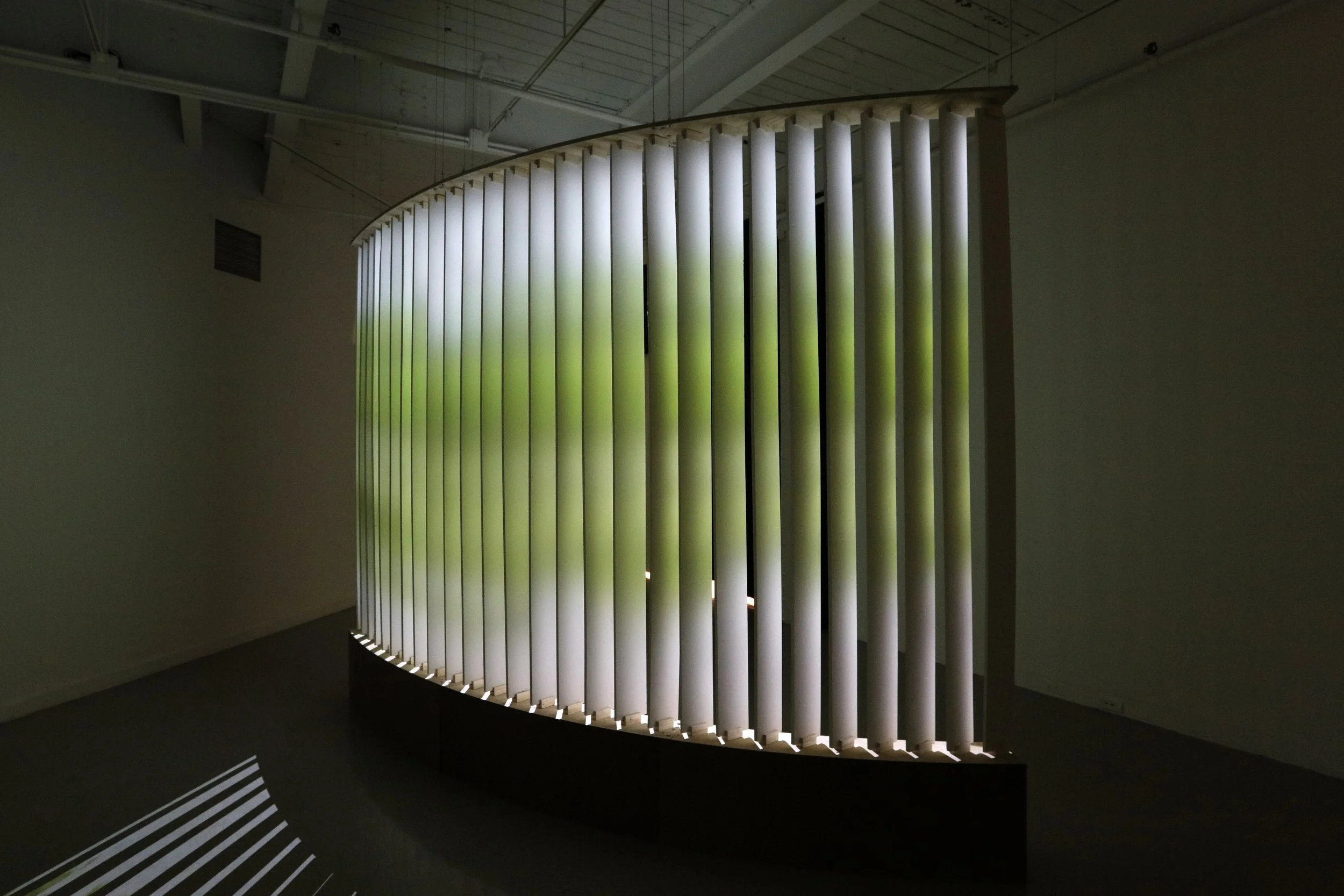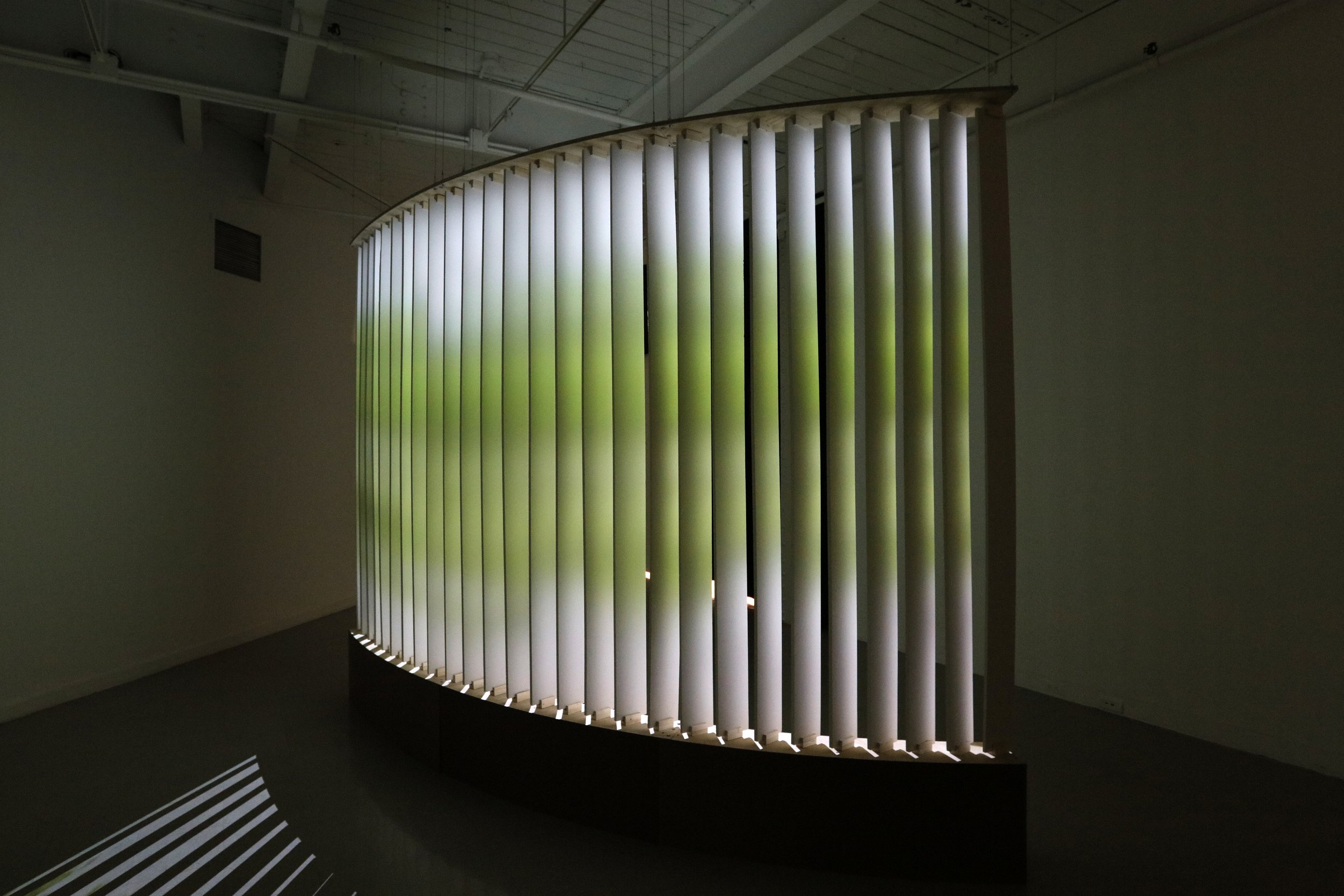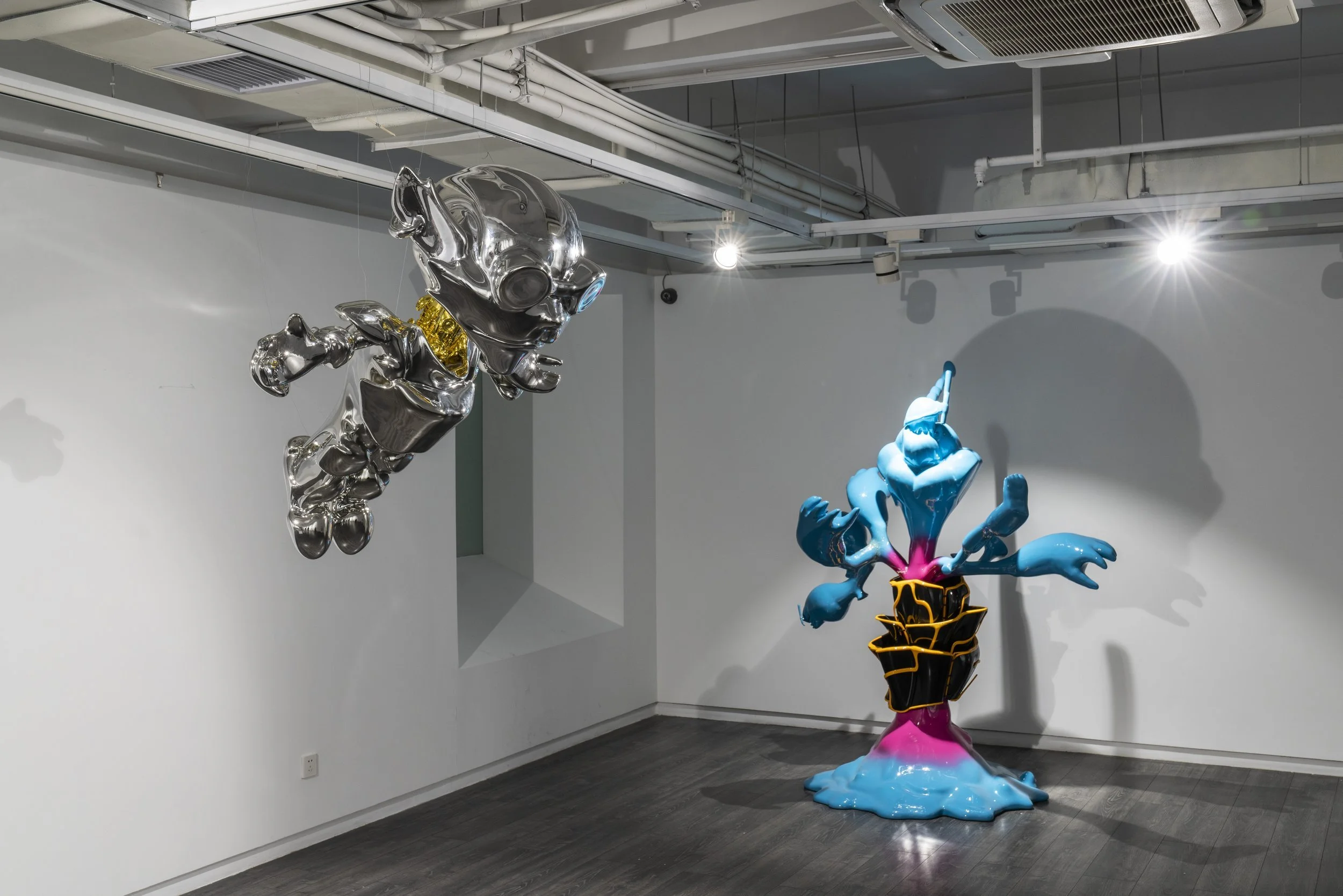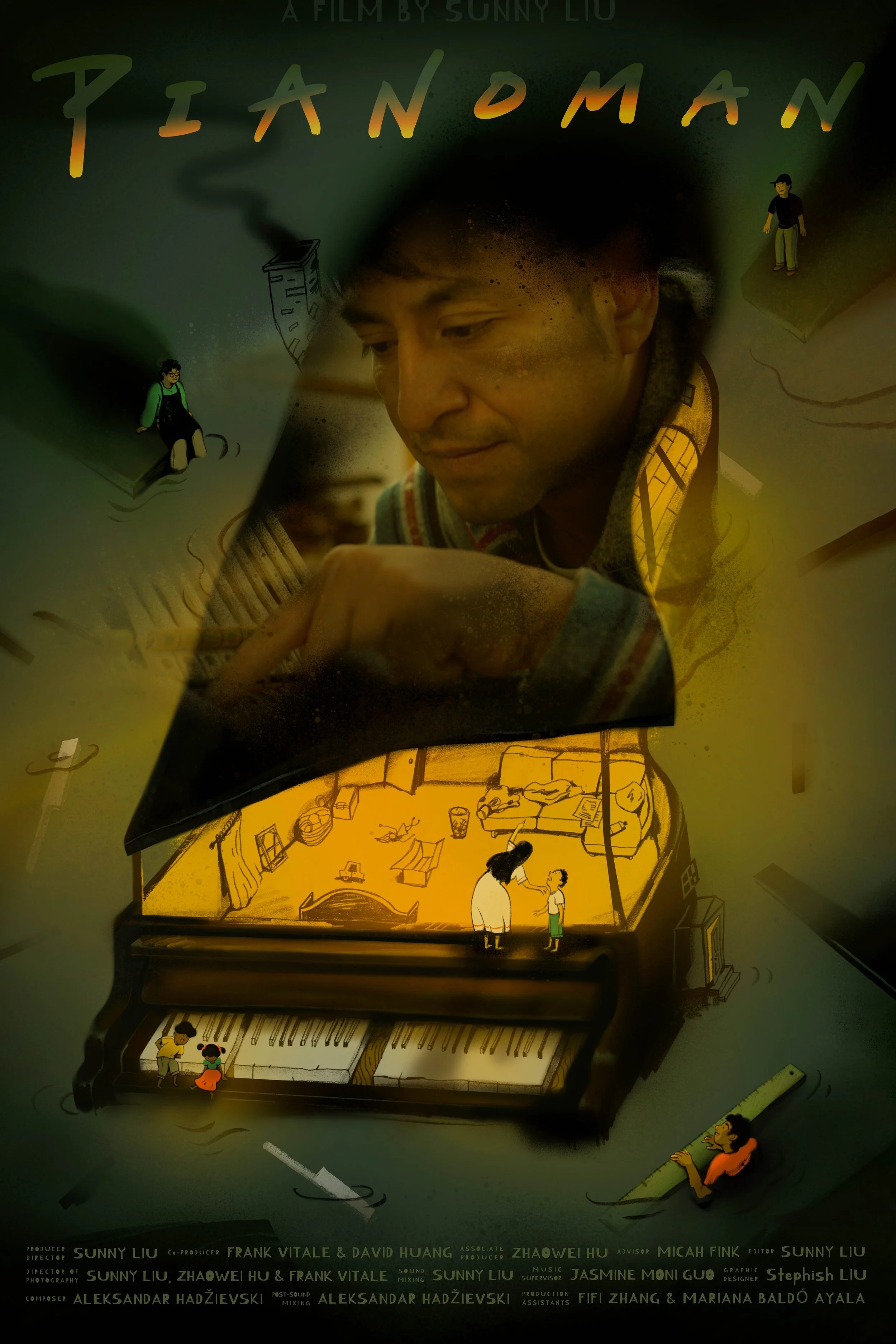10 Questions with Jiangshengyu Nova Pan
Jiangshengyu Nova Pan is a moving image and installation artist. She currently lives and works in Baltimore. Nova’s works have been shown, including New Works, Baltimore, NoMuNoMu space in Baltimore, Meyerhoff Gallery in Baltimore, London Design Museum in London, ADC Global Gallery in New York, and 1650 Gallery in Los Angeles. Pan has received recognition for her artistic endeavors, such as the Eisenstein-Zimelman Award for Time-Based Media in 2023, the Meyerhoff Fellowship in 2022, and the Mount Royal Community Award in 2021.
Jiangshengyu Nova Pan - Portrait
ARTIST STATEMENT
Jiangshengyu Nova Pan’s work focuses on human mobility. Working from the perspective of the individual, at times the artist herself, Pan’s work explores the profound transformations of space, power relations, and social networks faced by a mobile population. While her work was originally inspired by the Chinese context, where the blistering pace of social and economic change has made migration an inevitability for millions– she uses this history as an aperture, playing with scale and moving beyond place, exploring how mobility is internalized, and migration felt in the body. In Pan’s works, these themes are realized through sculptures and videos by appropriating everyday life scenes based on her semi-fictional writings (text-based). Pan’s artistic practice is heavily influenced by cinema as a medium, particularly light and staging, interviews, rumor, and intergenerational story-telling.
INTERVIEW
First, introduce yourself to our readers. Please tell us more about your background and how you began making art.
I'm currently a visual artist based in Baltimore. My journey in visual art began in 2018 as a graphic designer in New York City following my graduation from the BFA design program at the School of Visual Arts. Later, I realized that my true passion lay in the conceptual aspects of art, prompting me to make a significant change. I returned to China and immersed myself in pottery while rekindling my childhood passion for video creation. I discovered my interest in video art and installation work. To deepen my understanding of art history and receive academic critiques, I moved to Baltimore in 2021 to pursue a multidisciplinary MFA program at the Maryland Institute College of Art. Since then, I've lived in Baltimore and worked as a full-time visual artist.
How would you define yourself as an artist? And what makes you unique?
As an artist, I define myself as an observer and sampler of unfixed circumstances through the language of images. My uniqueness stems from a fusion of my diverse cultural influences, allowing me to weave intricate narratives that resonate on a universal level.
Ultimately, my distinctiveness lies in my ability to translate personal experiences and reflections into visual images that evoke contemplation and connection.
As if passing through an open corridor, video installation, 140x110x20 in, 2023 © Jiangshengyu Nova Pan
You work with both moving images and installations. Can you guide us through your creative process?
I shoot footage on a daily basis, considering it a process of sampling reality. Typically, I have an unfixed concept in mind and draw inspiration from various sources, including art history, literature, and films. While capturing samples, I begin to write, engaging in a weaving process that combines visuals and text.
How do you work with each medium individually, and how do you blend them? Does it depend on the themes you work with?
I love to blend different mediums together. I take mixed media as an embodiment of both sampling and multiculturalism. While I'm not mixed race, I am undeniably a product of a fusion of cultures. It does depend on the theme I work with.
Let's talk about the main themes behind your art. What messages are you trying to convey?
My art practice revolves around the concept of human mobility. From an individual perspective, including my own experiences, I delve into the profound transformations of space, power dynamics, and social networks faced by mobile populations. Although initially inspired by the rapid social and economic changes in the Chinese context, where migration has become inevitable for millions, I utilize this context as a lens to explore broader themes. I play with scale and move beyond place, exploring how mobility is internalized and migration felt in the body.
Come Here (video still), video, 2022 © Jiangshengyu Nova Pan
Come Here (video still), video, 2022 © Jiangshengyu Nova Pan
In your statement, you quote human mobility as the main focus of your work. Can you tell us more about this concept? And how do you incorporate it into your work?
Currently, I explore the concept of mobility from two perspectives. Firstly, the desire to be mobile. I believe that as humans, we possess an inherent desire for far-land and the unknown. This primal aspect of human nature propels us to venture into new territories, fostering the evolution of transportation, dismantling geographical constraints, and facilitating swiffer movement.
Secondly, I aim to delve into the empowerment derived from mobility and the pace at which it operates. To me, mobility represents a distinct form of power—an ability to avoid being fixed in a single position and to have a multitude of choices. This power of choice is not universally accessible; for instance, a factory owner employs workers to operate machinery, freeing himself from being tethered to the machines. The time thus liberated can be channeled into generating additional profits. Additionally, in the virtual world, the speed of the internet may influence the "size" of the metaverse.
This current flows, weaving together currents of power, dynamic forces, and the tapestry of racial and cultural integration. Mobility births discussions on various subjects, akin to a nurturing force. I explore these discussions through semi-fictional writing, transforming them into fragmented words. These words, in turn, evolve into the script for my video. The text may serve as the narration for the video, or it may remain concealed, acting solely as a guide for the visual elements.
As an expat yourself, how much of your personal experience is reflected in your work?
100%. For me, the history I read in books and the stories I hear from others are also integral parts of my personal experience. I believe that everyone's work should not necessarily be tied to identity but is indeed intricately connected to personal experiences.
Lean on Liquid, video, dimension variable, 2021 © Jiangshengyu Nova Pan
You are still young and have an impressive career with several exhibitions and awards. What did you learn from these experiences? And how do they influence your work?
Exhibition experiences taught me a lot about communication. The remuneration received from exhibitions and awards can indeed support creation materially, which allows me to test more material.
What else would you like to achieve? In other words, what is your biggest goal?
My biggest goal is to create artwork that fully satisfies me. It's hard for me. It might never happen. Other than this, I wish I could share my knowledge through teaching.
Finally, what are you working on right now? Is there anything exciting you would like to tell our readers?
I am in the process of planning new video and installation projects. It might be about a ghost that has been wandering for a long time.
Artist’s Talk
Al-Tiba9 Interviews is a promotional platform for artists to articulate their vision and engage them with our diverse readership through a published art dialogue. The artists are interviewed by Mohamed Benhadj, the founder & curator of Al-Tiba9, to highlight their artistic careers and introduce them to the international contemporary art scene across our vast network of museums, galleries, art professionals, art dealers, collectors, and art lovers across the globe.



















